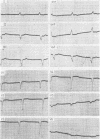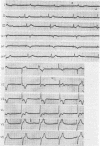Abstract
Four members of a family with scapuloperoneal syndrome were examined and investigated. The pattern of inheritance was autosomal dominant and the myopathic basis of the muscle atrophy was established by histological studies of muscle and spinal cord. The family illustrates an unusual combination of features which appear to be distinct from those of other families with myopathic scapuloperoneal syndrome and autosomal dominant inheritance. These include early age of onset and rapid progression in most cases; occurrence of early muscle contractures; and a high incidence of severe cardiomyopathy in three of the four cases. Some of these features resemble those seen in the x-linked form of the disease and the present family appeared to be a new variant of the autosomal dominant form of the scapuloperoneal syndrome.
Full text
PDF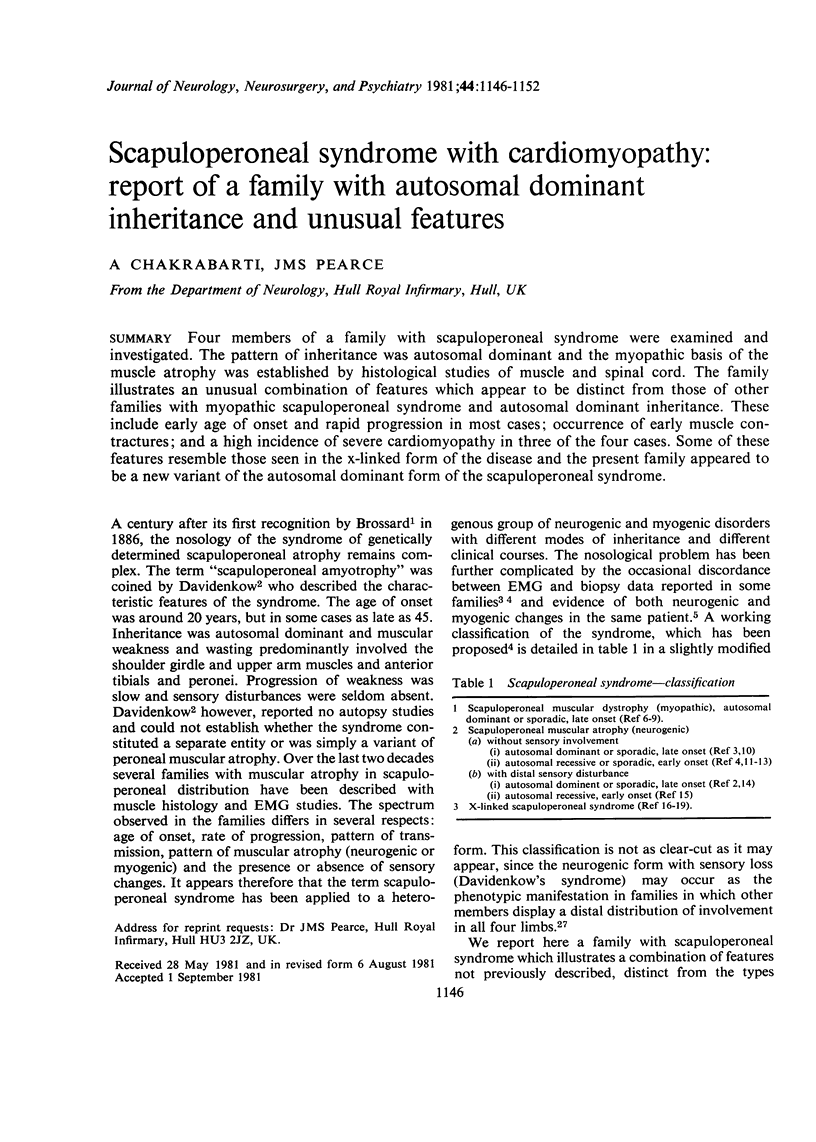
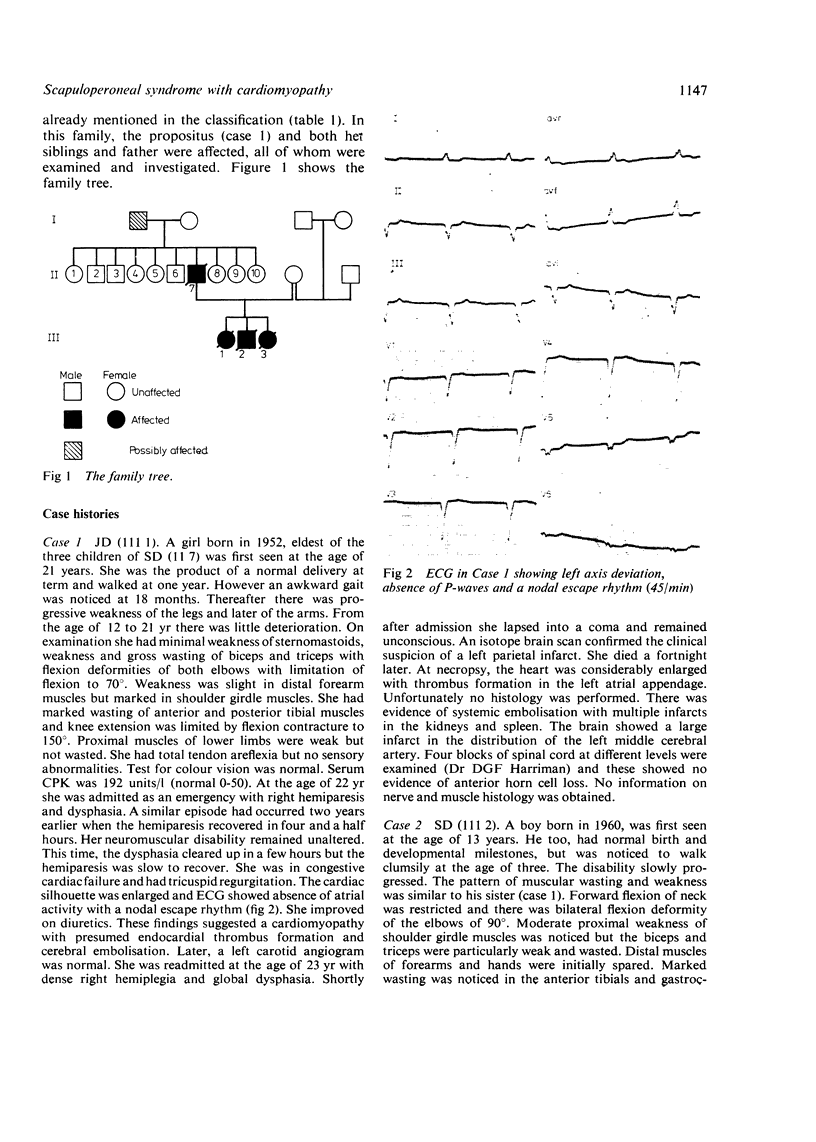
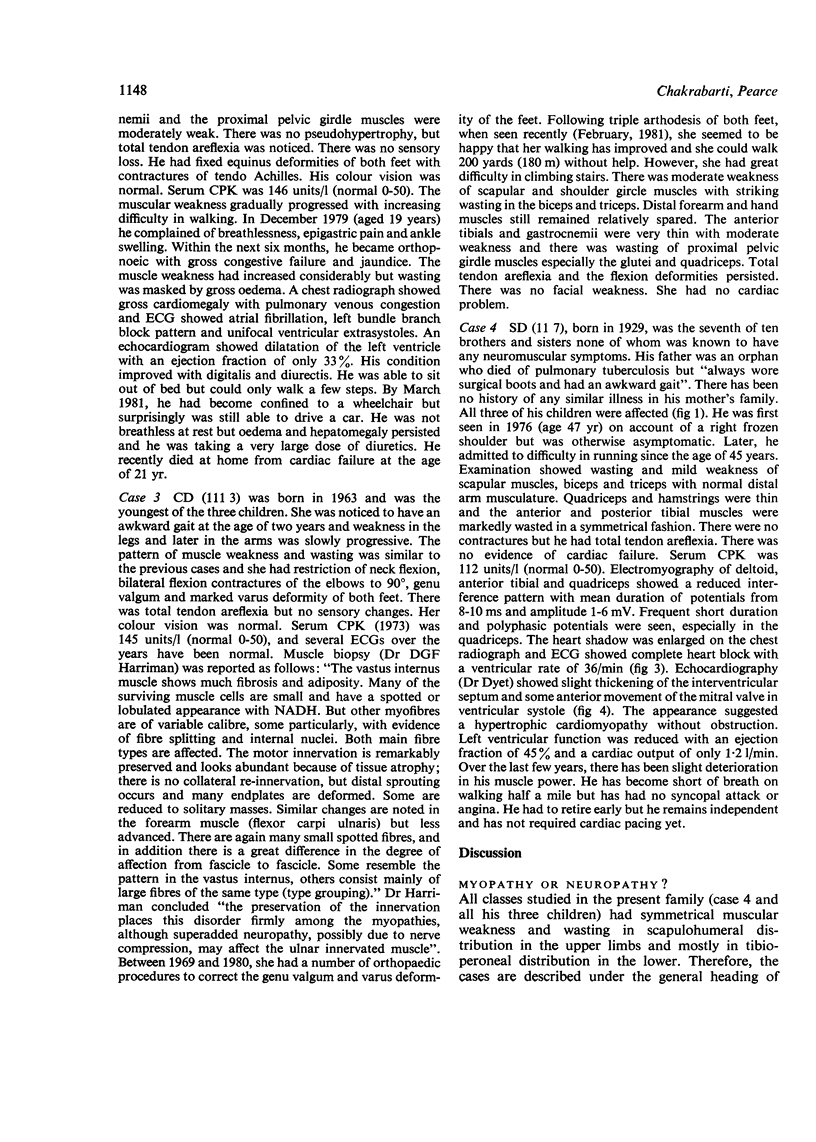
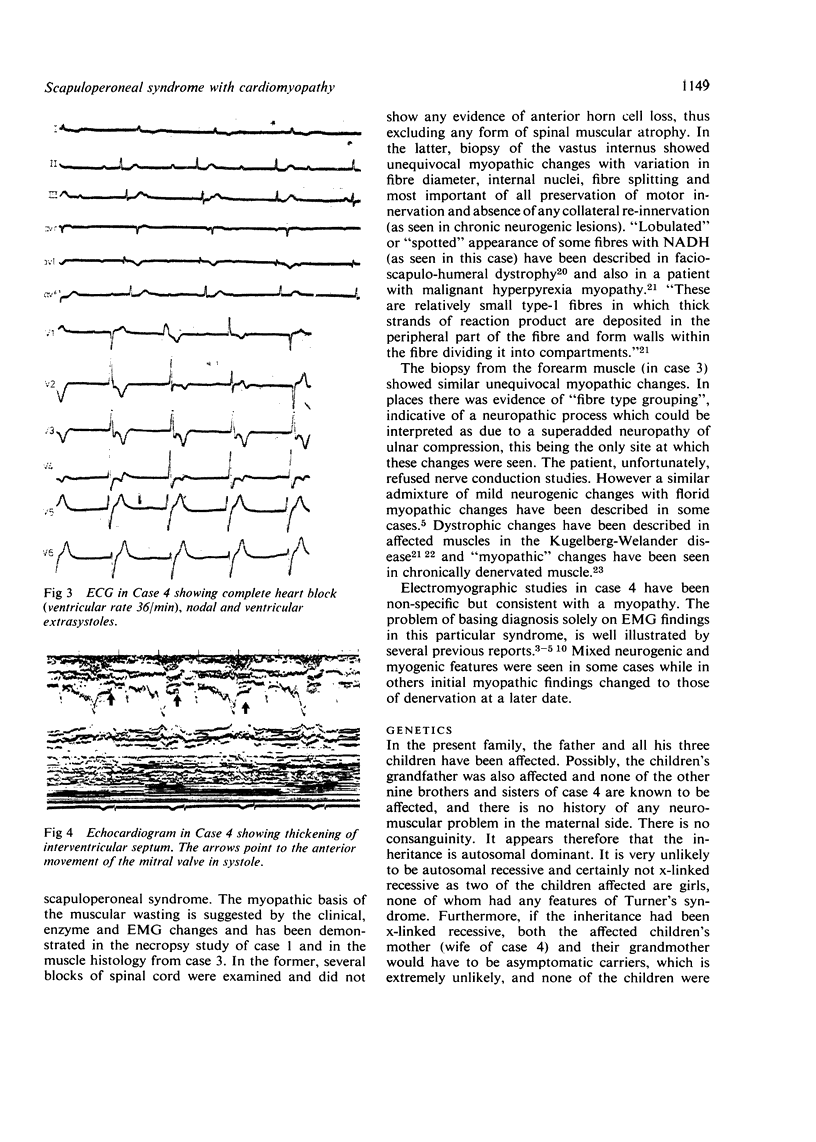
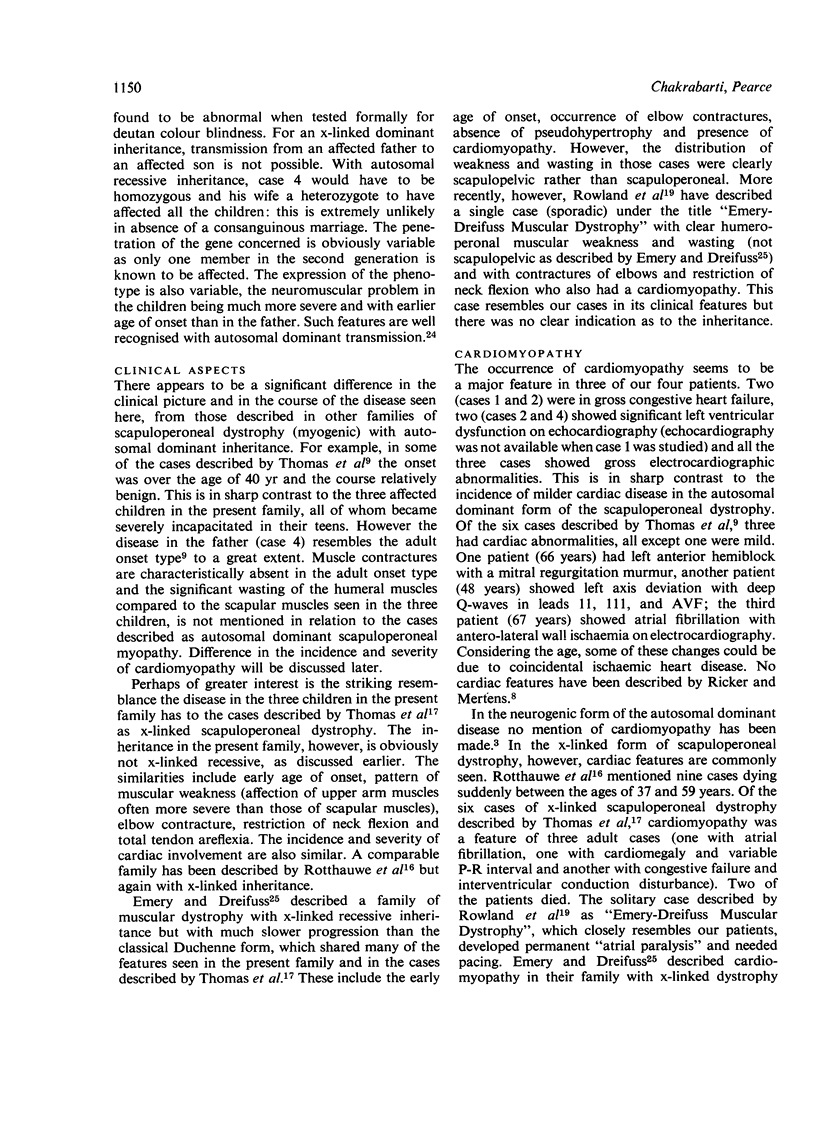
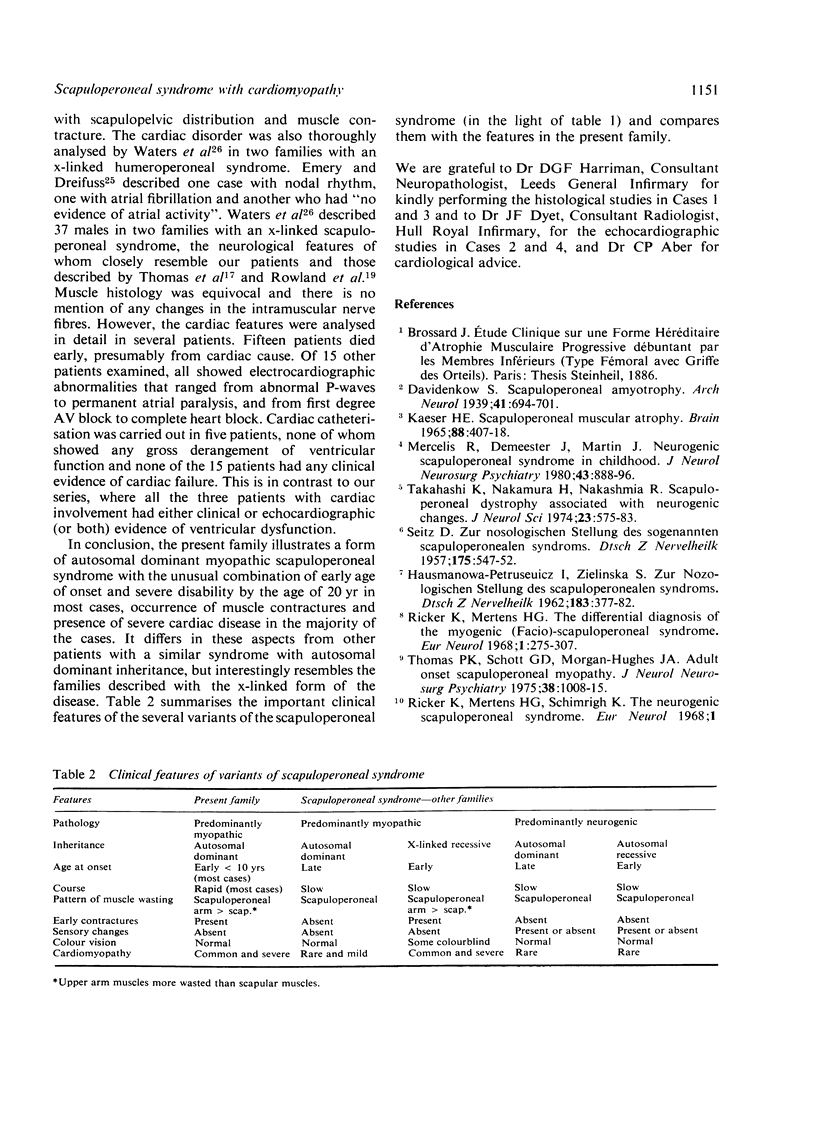
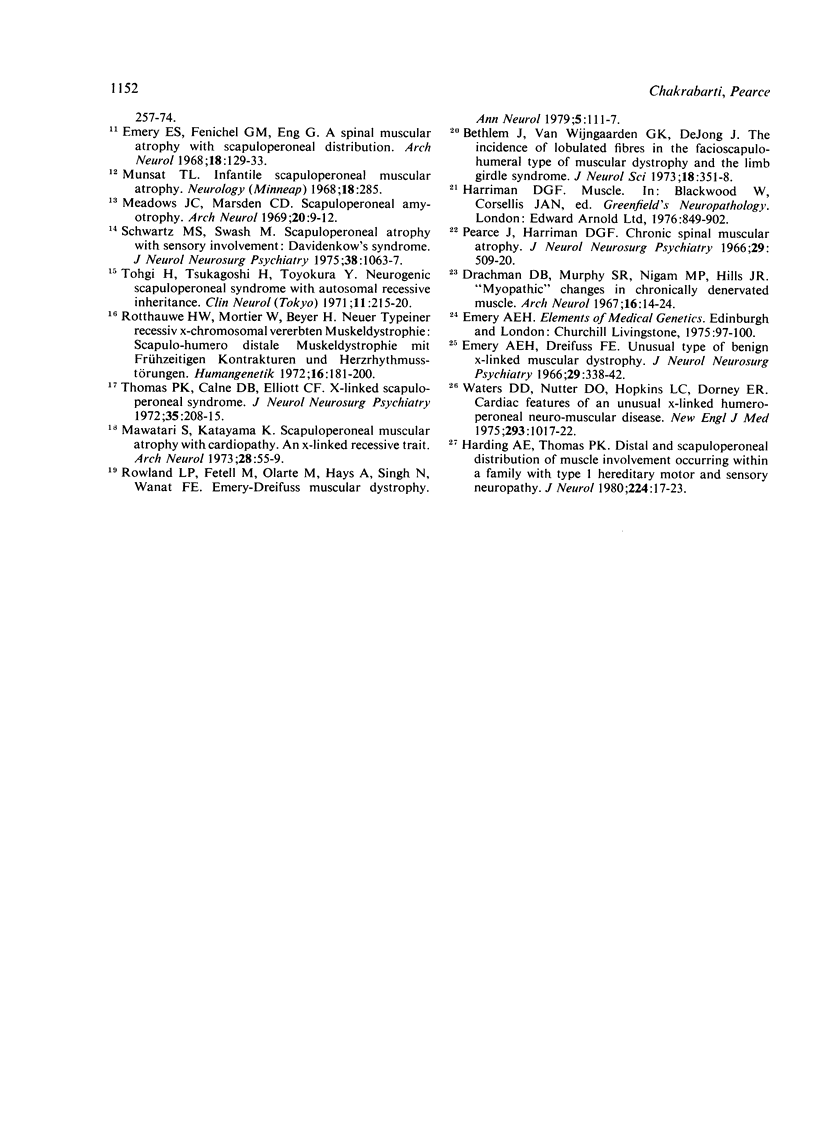
Images in this article
Selected References
These references are in PubMed. This may not be the complete list of references from this article.
- Bethlem J., van Wijngaarden G. K., de Jong J. The incidence of lobulated fibres in the facioscapulo-humeral type of muscular dystrophy and the limb-girdle syndrome. J Neurol Sci. 1973 Mar;18(3):351–358. doi: 10.1016/0022-510x(73)90083-x. [DOI] [PubMed] [Google Scholar]
- Drachman D. B., Murphy S. R., Nigam M. P., Hills J. R. "Myopathic" changes in chronically denervated muscle. Arch Neurol. 1967 Jan;16(1):14–24. doi: 10.1001/archneur.1967.00470190018002. [DOI] [PubMed] [Google Scholar]
- Emery A. E., Dreifuss F. E. Unusual type of benign x-linked muscular dystrophy. J Neurol Neurosurg Psychiatry. 1966 Aug;29(4):338–342. doi: 10.1136/jnnp.29.4.338. [DOI] [PMC free article] [PubMed] [Google Scholar]
- Emery E. S., Fenichel G. M., Eng G. A spinal muscular atrophy with scapuloperoneal distribution. Arch Neurol. 1968 Feb;18(2):129–133. doi: 10.1001/archneur.1968.00470320031003. [DOI] [PubMed] [Google Scholar]
- HAUSMANOWA-PETRUSEWICZ I., ZIELINSKA S. [On the nosological role of the scapulo-peroneal syndrome]. Dtsch Z Nervenheilkd. 1962;183:377–382. [PubMed] [Google Scholar]
- Harding A. E., Thomas P. K. Distal and scapuloperoneal distributions of muscle involvement occurring within a family with type I hereditary motor and sensory neuropathy. J Neurol. 1980;224(1):17–23. doi: 10.1007/BF00313203. [DOI] [PubMed] [Google Scholar]
- Kaeser H. E. Scapuloperoneal muscular atrophy. Brain. 1965 Jun;88(2):407–418. doi: 10.1093/brain/88.2.407. [DOI] [PubMed] [Google Scholar]
- Mawatari S., Katayama K. Scapuloperoneal muscular atrophy with cardiopathy. An X-linked recessive trait. Arch Neurol. 1973 Jan;28(1):55–59. doi: 10.1001/archneur.1973.00490190073010. [DOI] [PubMed] [Google Scholar]
- Meadows J. C., Marsden C. D. Scapuloperoneal amytrophy. Arch Neurol. 1969 Jan;20(1):9–12. doi: 10.1001/archneur.1969.00480070019002. [DOI] [PubMed] [Google Scholar]
- Mercelis R., Demeester J., Martin J. J. Neurogenic scapuloperoneal syndrome in childhood. J Neurol Neurosurg Psychiatry. 1980 Oct;43(10):888–896. doi: 10.1136/jnnp.43.10.888. [DOI] [PMC free article] [PubMed] [Google Scholar]
- Munsat T. L. Infantile scapuloperoneal muscular atrophy. Neurology. 1968 Mar;18(3):285–285. [PubMed] [Google Scholar]
- Ricker K., Mertens H. G. The differential diagnosis of the myogenic (facio)-scapulo-peroneal syndrome. Eur Neurol. 1968;1(5):275–307. doi: 10.1159/000113669. [DOI] [PubMed] [Google Scholar]
- Rotthauwe H. W., Mortier W., Beyer H. Neuer Typ einer recessiv X-chromosomal vererbten Muskeldystrophie: Scapulo-humero-distale Muskeldystrophie mit frühzeitigen Kontrakturen und Herzrhythmusstörungen. Humangenetik. 1972;16(3):181–200. doi: 10.1007/BF00273464. [DOI] [PubMed] [Google Scholar]
- SEITZ D. Zur nosologischen Stellung des sogenannten scapulo-peronealen Syndroms. Dtsch Z Nervenheilkd. 1957;175(6):547–552. [PubMed] [Google Scholar]
- Schwartz M. S., Swash M. Scapuloperoneal atrophy with sensory involvement: Davidenkow's syndrome. J Neurol Neurosurg Psychiatry. 1975 Nov;38(11):1063–1067. doi: 10.1136/jnnp.38.11.1063. [DOI] [PMC free article] [PubMed] [Google Scholar]
- Takahashi K., Nakamura H., Nakashima R. Scapuloperoneal dystrophy associated with neurogenic changes. J Neurol Sci. 1974 Dec;23(4):575–583. doi: 10.1016/0022-510x(74)90029-x. [DOI] [PubMed] [Google Scholar]
- Thomas P. K., Calne D. B., Elliott C. F. X-linked scapuloperoneal syndrome. J Neurol Neurosurg Psychiatry. 1972 Apr;35(2):208–215. doi: 10.1136/jnnp.35.2.208. [DOI] [PMC free article] [PubMed] [Google Scholar]
- Thomas P. K., Schott G. D., Morgan-Hughes J. A. Adult onset scapuloperoneal myopathy. J Neurol Neurosurg Psychiatry. 1975 Oct;38(10):1008–1015. doi: 10.1136/jnnp.38.10.1008. [DOI] [PMC free article] [PubMed] [Google Scholar]
- Waters D. D., Nutter D. O., Hopkins L. C., Dorney E. R. Cardiac features of an unusual X-linked humeroperoneal neuromuscular disease. N Engl J Med. 1975 Nov 13;293(20):1017–1022. doi: 10.1056/NEJM197511132932004. [DOI] [PubMed] [Google Scholar]



